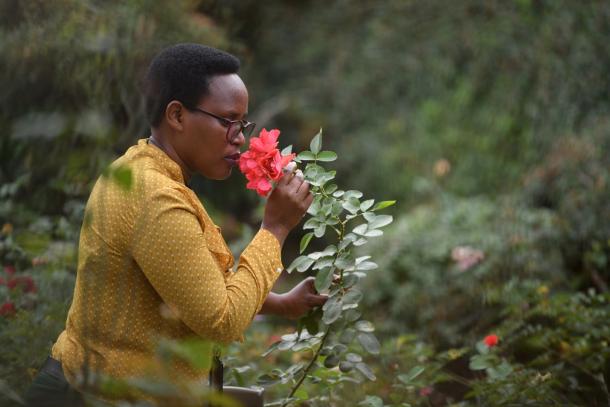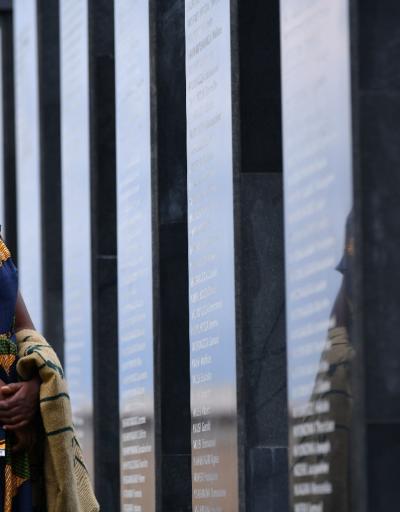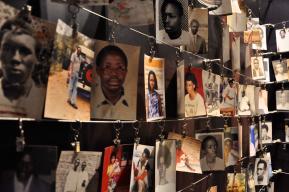Philippe Kayitare survived the massacre at Nyamata church in which 10,000 people were murdered. Juliette Mukakabanga, a Hutu, saved the life of her Tutsi baby during the massacre at Murambi. In the hills of Bisesero, Antoine Sebiroro was among those who fought back. And in Gisozi, survivor Prisca Umwanankunda now works as an archivist helping to preserve records of such memories. Through their interactions with these landscapes, this photo essay offers not only an introduction to the sites themselves, but insights into the human experience which makes each of them so meaningful.
Nyamata
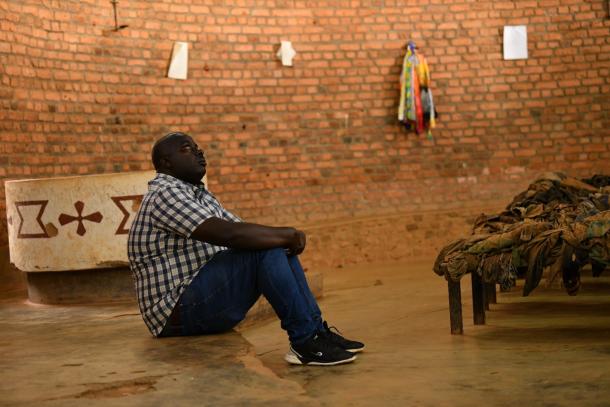
In two days around ten thousand Tutsi were murdered in this church, 14-15 April 1994. 21 members of Philippe Kayitare’s family were among them, including his parents, four siblings, grandmother, uncles, aunts and cousins. Here he is seated where he lay injured during the massacre.
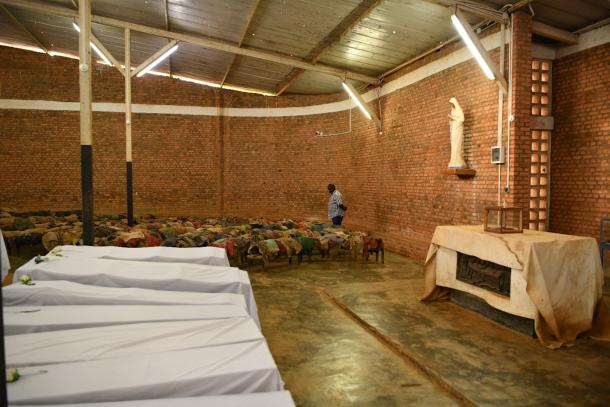
Beneath a corrugated roof studded with a star-scape of shrapnel holes, survivor Philippe Kayitare joins the Virgin Mary’s vigil over the clothes of the murdered. Thirty years on, victims are still being located. Foreground: Coffins containing recently discovered remains await burial.
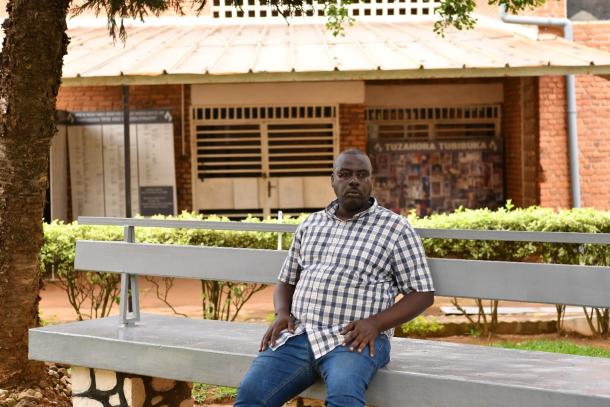
Philippe Kayitare sits on a bench outside the church where he survived the massacre which took the lives of his family. “I was hit by machetes in the face, and a grenade caught my leg,” he says. “My pregnant mother was killed by a machete. My father was shot at the entrance of the church.”
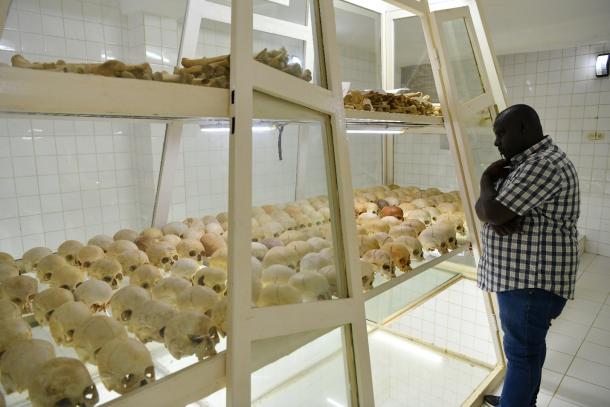
Around fifty thousand victims of the Genocide against the Tutsi are buried here, including people murdered in the church and surrounding area. “I come here to remember them, to connect with them,” says Philippe of his family among them. “I chose to live close to feel their presence.”
Murambi
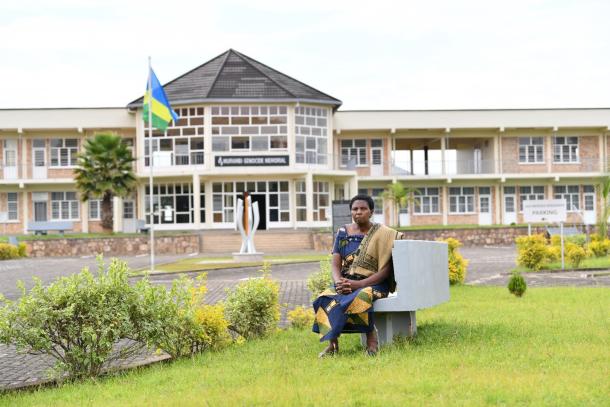
Around 50,000 Tutsi fled to this unfinished school complex as genocide began in April 1994. A Hutu with a Tutsi husband and children, Juliette Mukakabanga came here on 10 April. “Mayor Félicien Semakwavu instructed us to go to Murambi School, promising army protection,” she says.
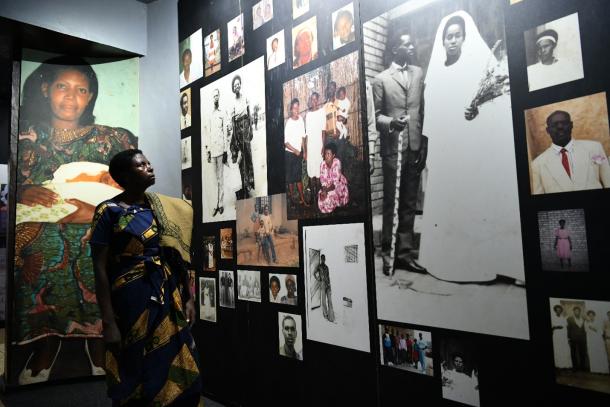
Juliette views pictures of genocide victims in the exhibition here. “I arrived with my husband, holding my two children and carrying my one-month-old baby on my back. With us were my mother-in-law and many of my husband’s family. We totalled 45 people. Only three of us survived.”

Juliette stands where she was during the assault on 21 April 1994. “The militia asked for my ID and found I was Hutu. I was carrying my baby on my back. They told me to hand over the Tutsi child to be killed. I refused. They said since I choose to be Tutsi, I will be killed with my baby.”
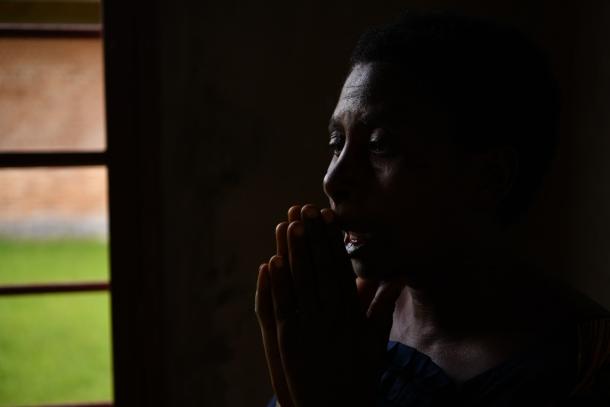
Juliette recounts what happened on this spot on 21 April 1994. “As the militia raised weapons to kill us, their chief blew a whistle signalling their work was done,” she says. “One took my ID card, my proof of Hutu identity, to ensure our future death.”
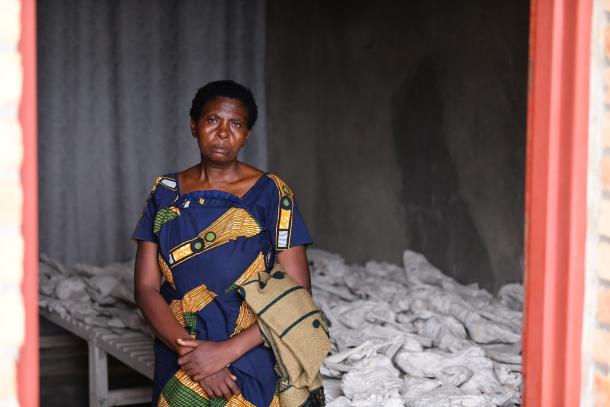
Hundreds of corpses are preserved in lime. Juliette does not know which if any are relatives. “My eight-year-old, six-year-old and husband were killed with machetes here, with other family. When I visit I am overwhelmed with sadness, yet it’s also where I feel closest to my loved ones.” Her infant daughter, Pauline, survived with her.
Bisesero
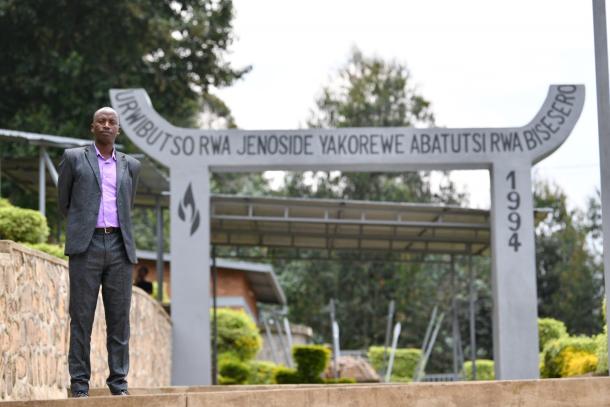
During the Genocide against the Tutsi, these hills became a centre of resistance. “We refused to die,” says Antoine Sebiroro. “We fought the militias for about a month. Aged 20 I was on the front lines, spying on the militia, noting their weapons, relaying information to those behind us.”
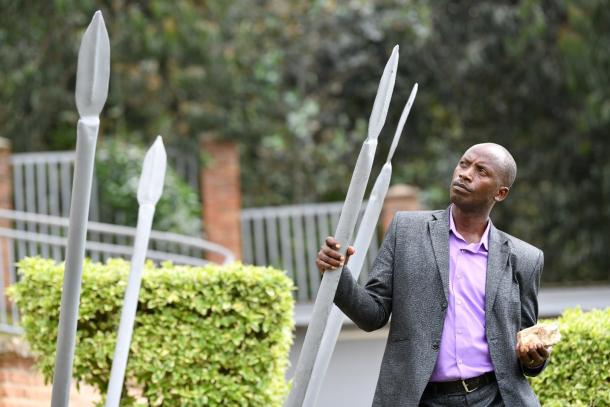
In May 1994, as Tutsi like Antoine Sebiroro continued to resist genocide with spears and rocks, soldiers joined the militia attacking them. “The darkest day came on 13 May, 1994, when over 30,000 Tutsis perished, including my parents, two siblings, and countless other relatives.”
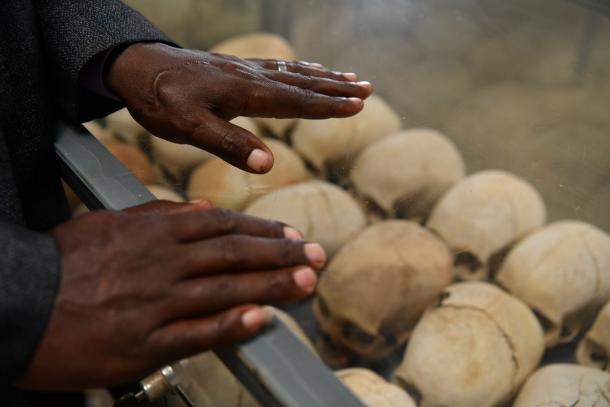
“I could easily have been one of these,” says Antoine, resting battle-scarred hands on a case holding skulls of Tutsi who died here. “My father fell to a bullet from a Presidential guard, while my mother was slain with a machete as she carried my sister’s child, who also died.”
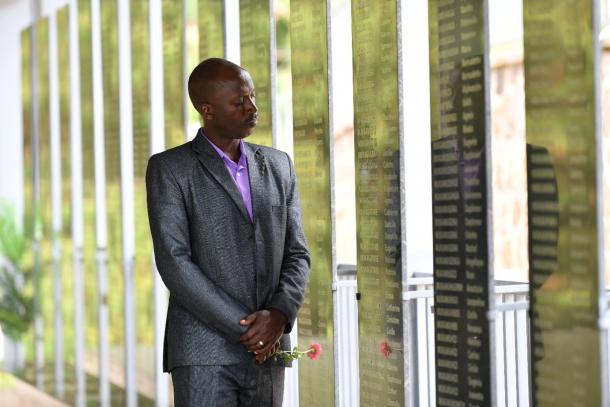
50,000 to 60,000 Tutsi are buried at this memorial. Antoine prepares to lay a flower in their memory. “Born into a family of seven, sadly only three of us survived,” he says. “Reflecting here reminds me of the battles we fought and the pain we endured witnessing our loved ones dying.”
Gisozi
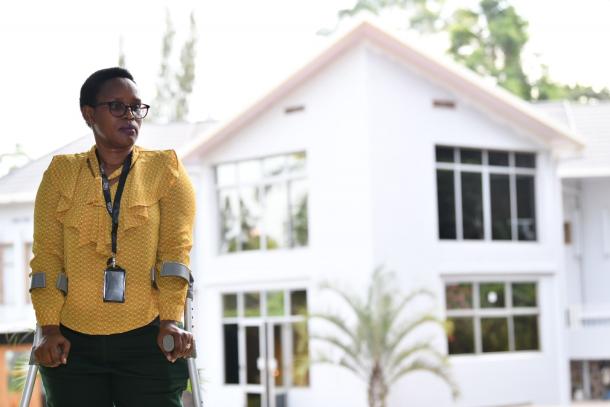
The Kigali Genocide Memorial is the final resting-place of 250,000 people murdered across Rwanda’s capital city during the Genocide against the Tutsi. The birthplace of peace education in Rwanda, it is also home to the Genocide Archive of Rwanda. Survivor Prisca Umwanankunda works there.
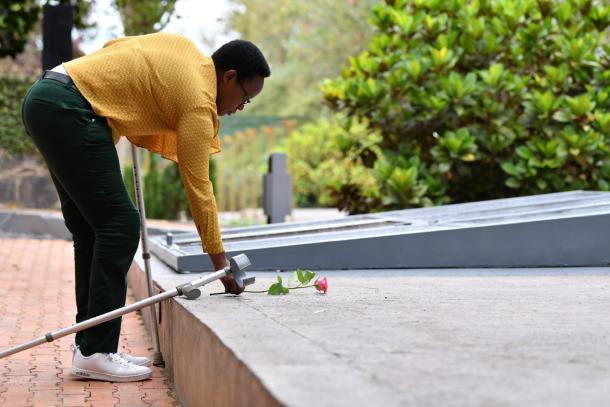
Prisca Umwanankunda lays a rose on a mass grave at the Kigali Genocide Memorial. “In the genocide our lives were shattered beyond comprehension,” she says. “My mother, three brothers and elder sister perished, along with countless relatives. The brutality of their deaths still haunts me.”
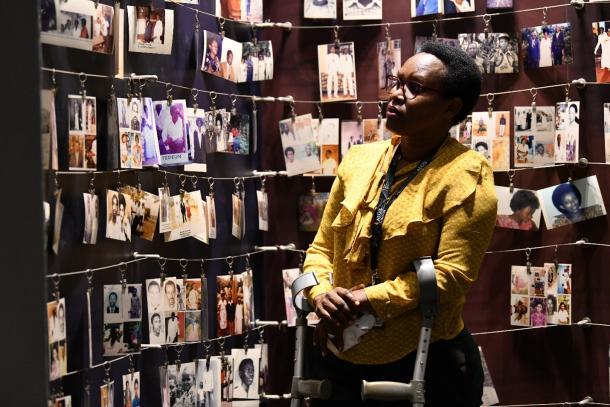
Prisca views photos of victims in the Memorial. “I remember the day I was caught at a roadblock,” she says. “The militia subjected me to unimaginable brutality. I was put on a bus with other half-alive Tutsi to be drowned at the Nyabarongo river. I used every ounce of strength to escape.”
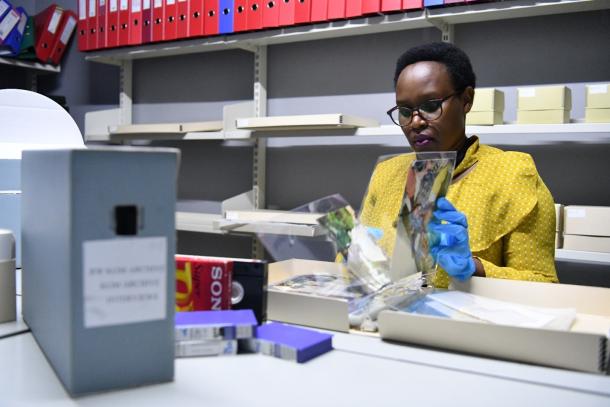
Prisca at work in the Genocide Archive. “The Genocide robbed me of my legs,” she says. “However much pain I feel every day, I push myself to progress. As an archivist here, I work to preserve the memory of those lost, honouring the lives of my loved ones.”
Prisca Umwanankunda in the Memorial Gardens. “This Memorial holds a special place in my heart,” she says. “A final resting-place for innocent souls, I vow to protect it at all costs, ensuring that their memory endures for generations. In this sacred space, I find solace and strength.”
Commissioned by UNESCO, this exhibition was created in 2024 by the Aegis Trust, which runs the Kigali Genocide Memorial on behalf of Rwanda’s Ministry of National Unity and Civic Engagement.
